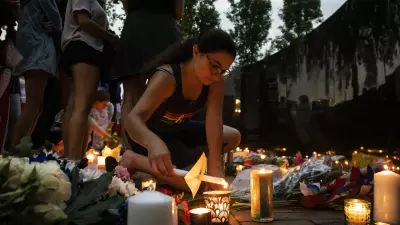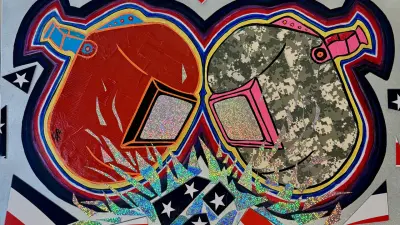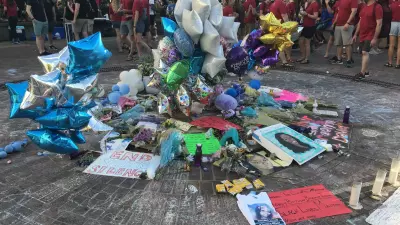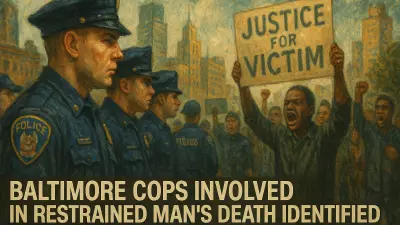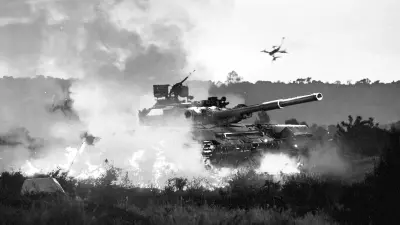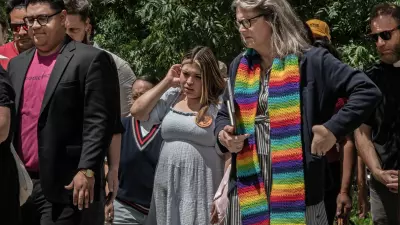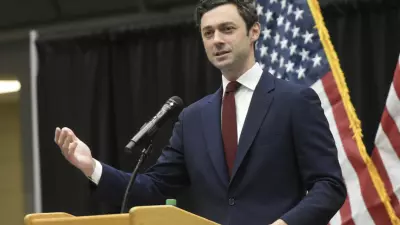With a gun violence rate 25 times higher than peer nations, guns are the leading cause of death among young people in America.

Mass shootings may dominate the headlines, but gun violence is deadly every single day.
In 2020, which is the most recent year for which we have complete data, guns killed more than 45,000 people in America, averaging more than 110 dead every day and hundreds more wounded.
This trend is happening in spite of a gun violence prevention movement that’s grown in size and sophistication, even outspending the NRA in recent federal election cycles. In spite of these shifts, and recent incremental wins in Congress, annual gun sales — and gun deaths — have both reached record levels.
Despite these facts, most Americans believe that guns will make them safer, and more and more of them are buying guns for protection. This reflects a cultural shift in favor of gun ownership over the past two decades. Between the 1970s and 2000, household gun ownership in the U.S. fell steadily from a peak of roughly 50 percent in 1978 to about one-third of households owning guns in 2000.
Twenty years ago, most Americans knew that having a gun at home made them less safe. But since then, Americans’ perceptions and behaviors on guns have shifted. Today, nearly two-thirds say the home is safer with a gun, and most people who buy guns say they are doing so for protection.
But the research is clear: The presence of a gun won’t make you safer. In fact, the likelihood of homicides, suicides, domestic violence deaths and unintentional shootings all rise dramatically when a gun is present. The risk of homicide is three times higher when there are guns in the home. Access to a firearm triples one’s risk of death by suicide. This elevated risk applies not only to the gun owner, but to everyone in the household. This suicide risk is particularly significant for young people, for whom the pandemic has taken a severe toll on their mental health.
With public sentiment shifting in favor of gun ownership for protection — contrary to the research and in the face of rising rates of gun violence — it is urgent that we ask: What will it take to reset the narrative to make clear that guns make us less safe?
Teens are on track to become the largest generation of consumers in the next few years, making them incredibly valuable to the gun industry.
Manufacturers are pouring tremendous resources into campaigns to use the fears and insecurities of young people to convince them to buy guns. And it’s working. Since 2019, one-quarter of new gun buyers have been aged 18 to 29. More than half of young people say they’re open to owning a gun in the future and three-quarters of young people say that having a gun at home will make the home safer, rather than less safe.
By engaging young people directly, we can rewrite gun culture in America. We can reduce preventable tragedies and make all Americans safer for generations to come.
Why do young people, like most Americans, equate more guns with more safety? The answer is likely complex, with personal, economic, and cultural factors at play. What we do know for sure is that these views are not yet set in stone.
On guns in particular, young people are open to learning more — nearly half told researchers that they would benefit from knowing more about these risks. We also know that the window in which young people’s views on guns form is brief.
By their early 20s, young adults often have fully formed stances on gun ownership. These views continue to calcify with age. This means that reshaping America’s gun culture hinges on connecting with teenagers while their views on guns are still forming.
At Project Unloaded, we’re working to empower teens with the facts on gun risks. We’re meeting young people where they are — on social media, and through influencers and their peers — to create space for honest conversations about the risks of using guns.
Talking directly to teens about gun ownership risks in a clear, non-threatening way won’t solve gun violence overnight, but it might be the secret to creating a long-term, life-saving shift on guns. With a positive and empowering message, we can have an honest conversation with teens — and avoid wading into a polarizing debate.
Why will this approach work? For starters, it has before. When the tobacco industry targeted teens, Truth Initiative led the way in ultimately changing youth attitudes about smoking. They spoke to teens plainly about the risks of smoking and encouraged them to make their own decision based on the facts. Thanks in large part to that work, teen cigarette use went from 23% in 2000 to less than 5% today.
And as youth mental health became a crisis during the COVID-19 pandemic, Seize the Awkward delivered tips and conversation starters directly to youth on TikTok to help spark discussions about mental health. These video stories have been viewed more than 50 million times and viewers report that they are more likely to have talked to a friend about their mental health.
We’re pulling from a tried-and-true playbook that is de-stigmatizing “big” issues for young people in America and bringing facts straight to their devices, thereby empowering them to make their own decisions. Using peer-reviewed research and teen culture, we can reveal the risks of using guns to young people in a way that they will see, hear, and share.
Narrative change does not happen overnight. The shift is likely to take a decade or more. But just as smoking cigarettes declined in popularity, so, too, can using guns.
By engaging young people directly, we can rewrite gun culture in America. We can reduce preventable tragedies and make all Americans safer for generations to come.

